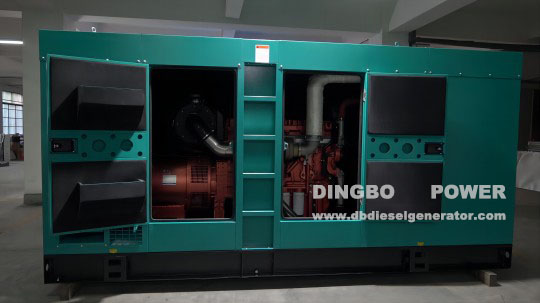Diesel generators are devices that can supply backup power during power outages or other emergency situations. They can also be used as the main power source in places without connection to a power grid. Diesel generators are versatile and commonly used in various applications around the world. In this article, we’ll explore how diesel generators produce electricity.
A diesel generator uses a combination of a diesel engine and an electromagnetic generator to generate electricity. It converts mechanical energy into electrical power through a careful process that involves several crucial components working smoothly together. Diesel engine burns diesel fuel to produce motion for generator, which converts motion into electricity by using electromagnets. The voltage regulator ensures that the voltage produced by the generator remains stable and consistent. This prevents damage to components that could be caused by the engine operating at high speeds. The control panel monitors and manages the entire process, ensuring optimal performance and safety.

Modern power generators work on the principle of electromagnetic induction discovered by Michael Faraday in 1831. He found that moving a magnet inside a coil of wire makes (induces) an electric current flow through the wire .
In order to better understand how a diesel generator creates electricity, you need to have a basic understanding of the roles of its main parts. In general, a diesel generator is made up of nine main components:
A diesel engine is the source of the mechanical energy. This component can also be found in vehicles, such as cars and vans. The size of the engine matters. The larger the power of the engine, the more electrical output you are able to produce.
An alternator is responsible for generating power output. It is made up of many complex components, including both moving and stationary parts that work together to create the movement that generates electricity. The stator is one of the critical parts of the alternator. It is a shaft that rotates - driven by the mechanical energy supplied by the engine - with multiple permanent magnets fixed around it. In doing so, this creates a magnetic field.
The fuel system mainly consists of a fuel tank with a pipe that connects it directly to the engine. The size of the fuel tank ultimately dictates how long a diesel generator can remain active for. If you intend to use a generator for camping, a portable diesel generator with a smaller fuel system is a good choice. Larger fuel systems are usually found for permanently installed ones which handle heavy workloads.
The voltage regulator is arguably the most complex part of a diesel generator. It can help regulate the voltage output and ensure that your generator produces electricity at a nice steady voltage. Without this component, it’s difficult for the generator to provide an steady power supply.
Both the cooling system and the exhaust system are crucial. The cooling system is vital for the correct functioning and extended lifespan of your diesel generator because it can eliminate excessive heat generated during engine operation and help prevent your generator from overheating. The exhaust system collects the exhaust gas created by the diesel engine and conveys them via the engine-mounted turbocharger, emissions equipment, and an exhaust gas silencer to the outside. With it, you can safely remove harmful gases produced during operation.
The lubrication system is mainly responsible for reducing friction, cooling, and cleaning your diesel engine. It attaches to the engine and pumps oil through it to ensure all the parts work smoothly. Lubrication system is a very important system of diesel generator set.
A battery charger can recharge or maintain the charge of a generator's battery and help kick-start your diesel engine into action. This component ensures any diesel generator can be ready for use whenever needed.
The generator control panel is a display parameter that presents different details and allows operators to control and operate the generator. You can start the generator remotely, check on system diagnostics, overall functions, and current status of the generator from here.
Your diesel generater will need to be contained and this is what the main assembly frame is. It can come in an open design or canopied to offer extra protection and sound attenuation. Many outdoor generators are typically housed in a protective frame that is weatherproof to prevent any long-term damage.
It is important to know how a diesel generator produces electricity. If you need any further information or additional assistance, feel free to contact us today. Dingbo Power provides a wide range of high-quality diesel generators and caters to different customers’ needs. With more than 15 years of experience in this industry, we can answer all of your diesel power generator questions.
Previous: Discover the Best WPC Machines at Machinemg.com
Next: Metal Stamping Press Machine vs Crank Press Machine: A Comprehensive Comparison
Copyright:@2020-2021
Comments Please sign in or sign up to post.
0
0 of 500 characters used